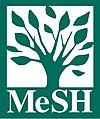A quantitative and qualitative study on the eating behaviors of fashion models: Perceived causes and consequences

Page views
26,149Date
2016Author
Thesis Adviser
Defense Panel Chair
Share
Metadata
Show full item record
Abstract
This study was conducted in order to describe the eating behaviors of fashion models in Iloilo City. Specifically, it sought to describe the demographic characteristics of the respondents in terms of age, body mass index, waistline, and number of years in modeling. It sought to determine the respondents’ level of self-esteem and to describe their eating attitudes and behaviors. It also sought to determine if there is a significant relationship between the demographic characteristics of the respondents and their level of self-esteem and eating attitudes and behaviors, between their level of self-esteem and eating attitudes and behaviors, and between the demographic characteristics of the respondents and their eating attitudes and behaviors controlling their level of self-esteem.
Moreover, it determined the perceived causes and consequences of problematic eating behavior.
The data-gathering instruments used for the quantitative study were the following: a researcher-made questionnaire for the demographic characteristics and standardized self-report tests for level of self-esteem and eating attitudes and behaviors. Analysis of data involved the use of both descriptive and inferential statistical tools.
Findings revealed that most of the fashion models were 22 to 25 years old, underweight, had waistlines that measured below 26 inches, and had been modeling for 1 to 4 years. Level of self-esteem among the fashion models was moderate, and they generally exhibited healthy eating behavior.
Demographic characteristics such as body mass index, waistline, and number of years in modeling had no bearing on level of self-esteem, as indicated by their negligible to low correlations. Only age showed a substantial relationship with level of self-esteem.
Whereby, those who were 18 to 21 years old had higher self-esteem than those aged 22 to 25 years old and 26 to 30 years old.
Demographic characteristics such as age, body mass index, waistline, and number of years in modeling had no bearing on eating attitudes and behaviors, as indicated by their negligible to low correlations.
Level of self-esteem showed high correlation with eating attitudes and behaviors.
Whereby, more respondents with high self-esteem had healthy eating behavior than those with moderate self-esteem.
In moderate self-esteem, demographic characteristics such as age, body mass index, and number of years in modeling had no bearing on eating attitudes and behaviors, as indicated by their negligible to low correlations. Only waistline was found to be highly correlated with eating attitudes and behaviors when self-esteem was controlled. Whereby, more respondents whose waistlines were 26 and above had healthy eating behavior than those whose waistlines were below 26 inches when self-esteem was controlled.
Among those with high self-esteem, demographic characteristics such as age, body mass index, waistline, and number of years in modeling were found to be correlated with eating attitudes and behaviors when self-esteem was controlled. Whereby, all models who were 22 to 25 years old and 26 to 30 years old, underweight, had waistlines measuring below 26 inches, and had been modeling for 5 to 9 years had healthy eating behavior when self-esteem is controlled.
For the qualitative study, an interview guide was used. The one-on-one interviews were audio recorded and transcribed verbatim thereafter. Findings revealed that among those with problematic eating behavior, common practices include skipping meals, checking calorie labels, and using diet pills. They frequently weighed or measured themselves to check for gains or increase in body size, felt guilty after eating more than they usually do, and perceived fruits and vegetables as healthy.
The perceived causes of problematic eating behavior include personal decision, psycho-emotional factors, social and environmental factors, external pressures, and physical condition. As for consequences, they include physical effects, psycho-emotional consequences, and socioeconomic consequences.
Description
Abstract only
Suggested Citation
Malaca, J. C. A. (2016). A quantitative and qualitative study on the eating behaviors of fashion models: Perceived causes and consequences (Unpublished Master’s thesis). Central Philippine University, Jaro, Iloilo City.
Type
ThesisSubject(s)
Keywords
Department
School of Graduate StudiesDegree
Master of Arts in NursingShelf Location
CD 610.73072 M29
Physical Description
xiii, 142 pages




